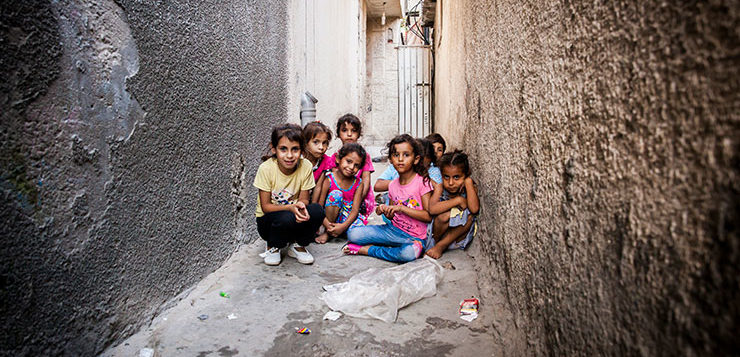In July, Sydney teacher Kylie Belov travelled to Gaza City to work briefly in a local school, as part of an aide program to assist Palestinian children, who have lived under an Israeli blockade for more than a decade. She knew broadly what to expect, but seeing it in person was something else altogether.
Time stands still in Gaza. “When you tell me that the war was four years ago now, I can’t believe it; it feels like only 3 months.”
A young Palestinian man describes the void of time since the 2014 Israeli aggression. Memories so vivid of fear and destruction precede a passage of time where it feels like nothing has improved, or even changed.
Today the youth unemployment rate reaches a staggering 60%, ground water is irreversibly contaminated with salt and sewage, cancer patients go untreated and the UN Relief and Works Agency is scraping for enough funds to open schools. A UN report in July last year suggested that their previous prediction Gaza would be uninhabitable by 2020 had been optimistic, and that the ‘unliveability’ threshold had already been passed.
Dr Yasser Abu Jamei, a Psychiatrist at the Gaza Community Mental Health Program, explains that the real damage runs deeper than what you see on the surface.
“People can deal with difficulty and hardship, but not the humiliation,” he says, referring to the denial of basic human rights and the restrictions imposed on movement that has led people to feel as though they are not treated as humans.
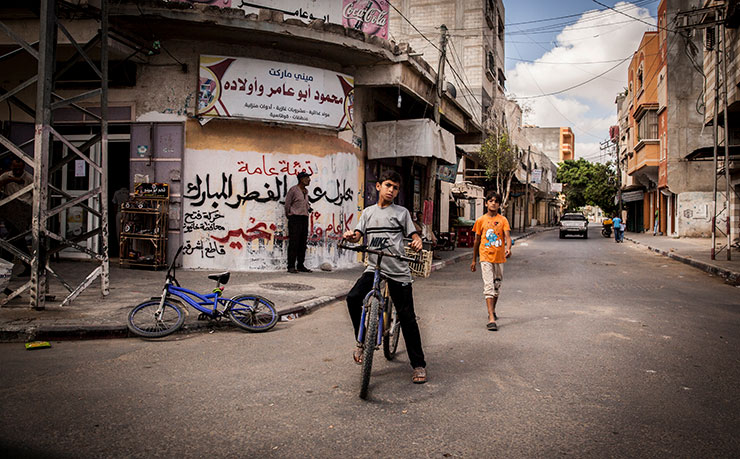
The international community continues to offer economic and humanitarian assistance, but doesn’t adequately demand the application of international law to address the core issues of settler-colonialism and occupation. As a result, Gaza exists on a lifeline of basic support that keeps people alive in a vacuum, where basic human rights do not exist and where the basic necessities of life are denied.
It should never be overlooked that half of the 2 million people in Gaza are children. A 10-year-old child alive today has experienced three major military attacks and lives the reality where drones, F16’s and 20-hour power cuts are the norm. The impact of perpetual physical and structural violence on Gaza’s children has been devastating.
Dr Yasser explains that 15% of school age children regularly wet their beds as a symptom of continuous fear and trauma. The impact of psychological disturbances in children has led to excessive irritability, panic attacks and a decline in the levels of concentration which has significantly reduced school achievement.
In a sweltering hot room in Khan Younis, close to the Israeli boundary, I had the opportunity to work with teenagers selected for a summer camp program following the injury of their parents in the ‘Great March of Return’.
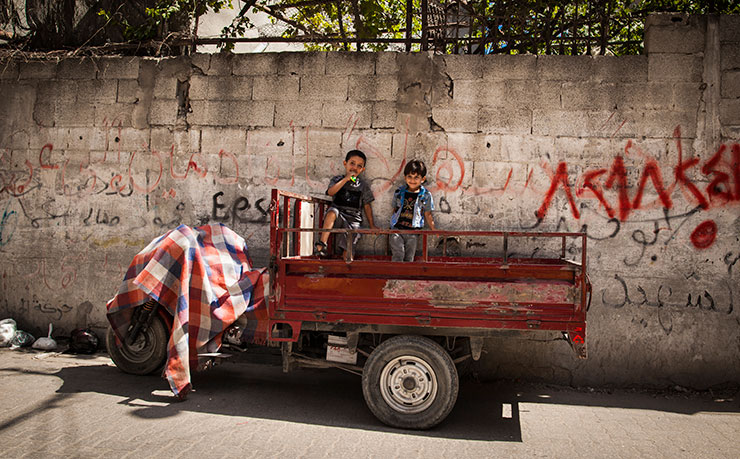
We arrived the first day to a group of girls waiting patiently in a small room, steaming with humidity so extreme that your sweat-drenched clothes clung constantly to your skin. The girls repeatedly pushed the switch on the fan, in the hope that the electricity had returned, but it never did. Despite the unbearable heat and limited space, the children worked without complaint.
They discussed regular childhood activities, describing their love for football, dancing, reading and how they always help their parents in the home. They told me about how they valued good manners, honesty and that “you should always keep a smile.” They explained the way that their community helps one another and how they support the poor and hungry.
The children were optimistic and ambitious. Some talked of wanting to become doctors, so they could help the sick and injured. Others dreamed of becoming journalists so that they could share their stories with the world, or lawyers as a means to defend their country.
What was notable is that despite the reality these children had suffered constantly under regular military aggression and the recent injury of their parents, not one of them mentioned any desire for violence, retaliation or resentment.
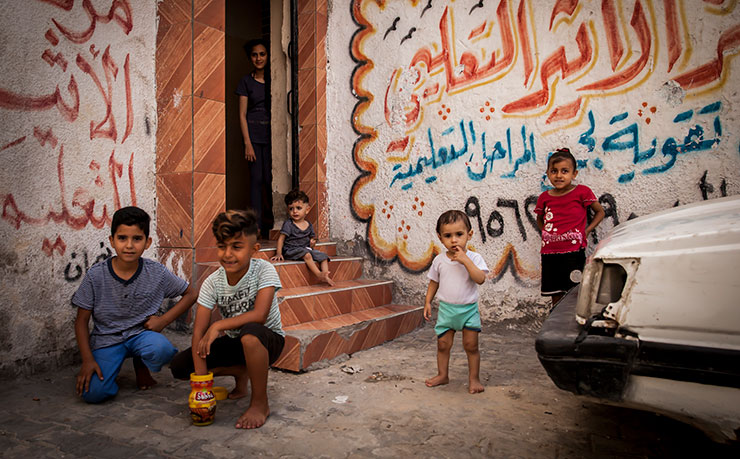
Instead they told me how they wanted to live in peace and see countries get along. They told me about their dreams of being able to travel, or to study overseas. This is a dream held by many of the youth in Gaza, who see this as their only opportunity to escape the difficulties and hardships of the siege.
One 11-year-old boy scribed his work in Arabic, outlining his hopes and dreams for the future: “I would like to live somewhere far away from here, far from sadness and worries.”
There was one place where all the children wished to travel, and that was to their beloved homeland. “I want to see Jerusalem”, “I love my country”, “I want to pray at al-Aqsa”, “I want to return to Palestine”. It has been 70 years now since their grandparents had been displaced from their land, and 70 years throughout which generations have been denied their rights and freedom. Their homeland remains visible only kilometres away, through the boundary fence. But their land is now consumed by the Israeli State and strictly prohibited to Palestinians in Gaza.
A young boy writes on his page “I wish to be free”, because at 12-years-old he knows his life in a refugee camp, under military siege and aggression, is very far from his idea of freedom.
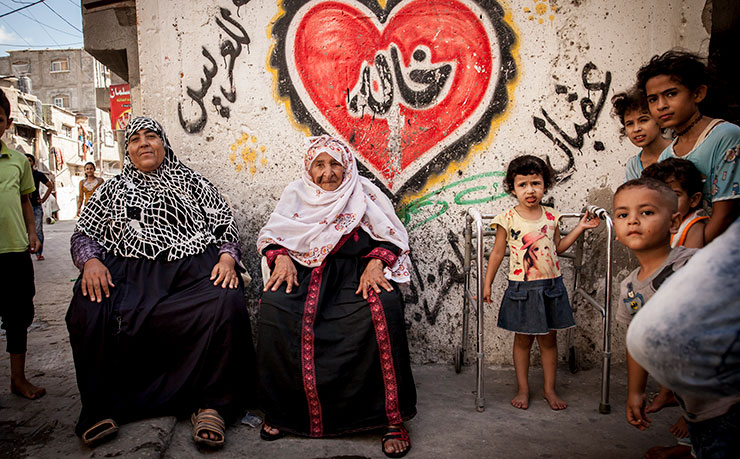
It was mainly the boys who talked about the ‘Great March of Return’. They attend with the rest of their community to stand together in protest for their rights.
Some of the girls go with their mothers to take food, and some join the demonstration. One of the boys told me about his cousin, Razan al-Najjar, a 21-year-old paramedic who was recently killed by an Israel sniper. Since the border protest began on 30 March, more than 160 Palestinians, including children, have been killed by Israel’s military.
At least another 15,000 people have been injured, many now suffering permanent disabilities from amputations.
And yet people still demand their dignity and freedom and their legal right to return to their land under UN Resolution 194. This resolution was passed by the United Nations General Assembly in 1948 following the ethnic cleansing of Palestine. However, in defiance Israel created a national law to prevent Palestinian ‘absentees’ from ever returning.
In the same breath Israel also enacted the ‘Law of Return’, which entitled any foreigner of Jewish religion to migrate to the newly established Israeli State, some of whom would move straight into the homes of Palestinians that were suffering in refugee camps.
The ongoing settler-colonial expansion has left more than 5 million Palestinians living as refugees, stateless and with no support for their legal right to return to their land.
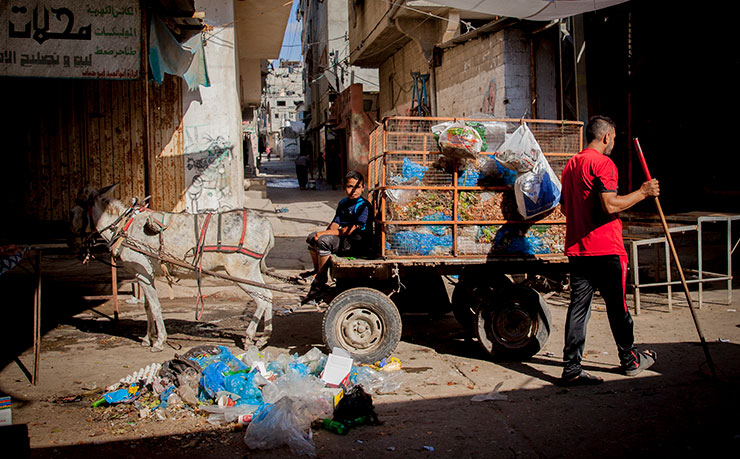
The boys in Khan Younis drew the Palestinian flag on their arms and incorporated it into their drawings. They talked about their right to return as though it was them who had fled the militias in 1948.
“Every day they are living the Nakba,” my translator explained. “In 2014 heavy bombing caused many people to flee. I felt like I was reliving my grandmother’s stories of running away and searching for safety.”
Most of the people in East Khan Younis had their homes destroyed, and still many remain internally displaced. So, not only have the children grown up in refugee camps, they continuously live and then relive recurring displacement. The injustice has not spared this generation, instead the consequences of ongoing setter-colonialism have only intensified.
The final group of boys were very unsettled, and it soon became clear that about half of them were completely illiterate. Dr Yasser had previously explained that although education in Gaza was free, parents still must pay for books, uniforms and transport. So, for a family with numerous children and no income, the cost of education becomes unattainable.
I asked the boys what they did through the day and a 15-year-old responded that he spent them collecting metal off the road to take to the market to sell for money to buy food for his family. His brother explained that he transported goods for the traders on his donkey, and that with the money he has saved he has started to build himself a house.
I had to stop asking questions, because I couldn’t find a way to respond to the answers. I had known this was the case in Gaza, but when it came directly from the mouths of polite young boys sitting in front of me, no different to the children I teach at my local high school in Sydney, it was overwhelming and heartbreaking.
One of the favourite past-times reported by the children was swimming, but as I drove back to Gaza City along the Mediterranean coastal road, I dreaded the thought of these children playing in the sea. The smell of sewage that engulfed our taxi as we passed through the Gaza Wadi was unbearable.
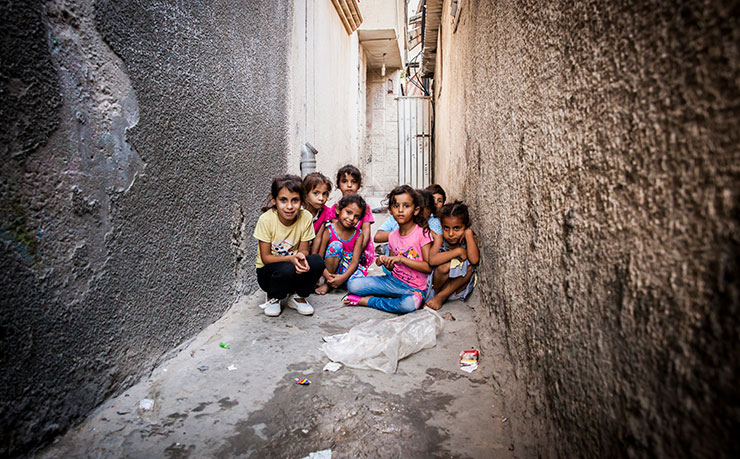
The valley, once the largest natural wetlands in Palestine, was a vibrant ecosystem of flora and fauna. Now it has succumbed to a swamp of human waste pouring into the Mediterranean Sea. The lack of electricity has left the sewage treatment plant practically inoperable.
The previously blue sea was now brown in most areas and the smell so bad that my colleagues insisted the taxi windows be closed. To make matters worse, due to overconsumption and the pilfering of natural water run-off by Israel, the groundwater aquifer, which should be the main water source for people in Gaza, has become depleted. Consequently, the sea water is running into the groundwater aquifer and providing households with sewage contaminated salt water, unfit for human consumption.
After five days, my the permission Israel had granted me to work in Gaza had expired, and I was required to leave. I headed back through the dirt track between two checkpoints, one Palestinian, one Israeli. At one point I was confused at whether to say ‘Shalom’, or ‘Salam’, because the security points operate so closely together.
At some areas along the barrier, only a barbed wire fence divides the privileged and the oppressed.
By the time I had reached Jerusalem, a 15-year-old boy from Khan Younis had been killed by live sniper fire at the border fence. Another 220 people had been shot or gassed for burning tyres, throwing stones and releasing flammable kites into Israel.
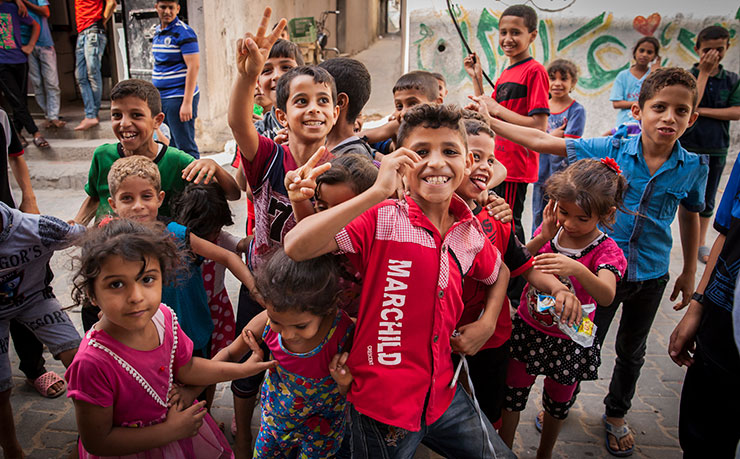
That night, Israeli warplanes shook Gaza with the largest military aggression since 2014. Israel targeted Hamas in response to the border protest, suggesting that people were acting as ‘human shields’, to cover ‘terror activity’. Israeli airstrikes resulted in the death of another two teenage boys.
After days of continued bombing and rocket fire, and more lives lost, another fragile ceasefire was declared, again ignoring the demands of Palestinians to lift the siege and enable their right to return to their land.
Once more, Gaza had been bombed back into submission in exchange for avoiding another high scale military operation. However, a ceasefire that ignores the rights of 2 million people cannot hold up against a population that increasingly feels they have nothing left to lose.
Donate To New Matilda
New Matilda is a small, independent media outlet. We survive through reader contributions, and never losing a lawsuit. If you got something from this article, giving something back helps us to continue speaking truth to power. Every little bit counts.

